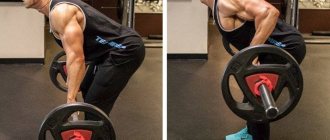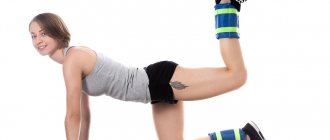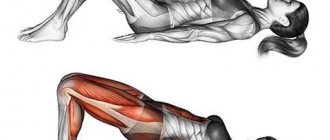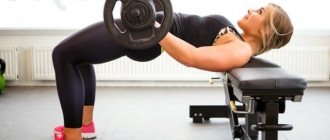In boxing, it's all about the legs, whether it's chasing down an opponent or taking pressure off an aggressive opponent. Legs are both part of defense and part of attack. The importance of footwork in the ring can hardly be overestimated, so this aspect is extremely important in the training of a good boxer or someone who wants to become one.
Here are a few ways to take your footwork to a whole new level:
Plyometric exercises
If you've ever played any explosive sport, then you most likely know what it is. These exercises are designed to increase explosive power as well as speed and strength combined. You put in maximum effort in a short period of time.
Here are some of these footwork exercises:
- Working on stairs
- Jumping on a stand
- Jumping from side to side from a standing position
- Jumping on one leg as far forward as possible
1.Hill running
Increases leg strength and speed
Find a suitable slope with a good surface (ideally a trimmed lawn) and a slope of about 15-25 degrees.
Acceleration runs
Accelerate for 5 seconds, then rest for 30. Do 5 to 15 reps, depending on your fitness level. Short overload in combination with resistance develops not only strength in the legs, but also, above all, speed, which is decisive in making single, fast movements.
Downhill sprint
If you really want to challenge yourself after accelerating uphill, then instead of resting, turn around and sprint downhill. Then take a 30-second break and start again, repeating the process 5-15 times.
Leg exercise - hill running
Leg strengthening
In order to move around the ring a lot and efficiently, your legs must be strong. When you work hard, weak legs soon turn to jelly and you have to go into survival mode. To prevent this from happening, the lower limbs need to develop and strengthen their endurance.
What will help with this? First things first is running. All boxers with good endurance run a lot; cross-country runs every morning are a mandatory condition of a boxer’s camp. It can also be a bicycle, but keep in mind that to achieve similar results from short runs on a bicycle, you will need to cover longer distances.
And of course, a jump rope. What is a boxer without a jump rope? All top leather glove masters are virtuosos of jumping rope.
What else to consider
In the initial stages, it is advisable to train only with your own weight. To increase the load, you can add more sets and do more repetitions. After this, feel free to move on to working with weights. All tasks must be performed with deep amplitude at medium speed. When done quickly, the quality of work decreases, and the risk of injury (sprains, dislocations) increases. If you experience severe muscle pain in the next few days after training, it is better to give time to rest or reduce the load to optimal. Before the main work, do not forget about warming up. Warm muscles are more elastic and less susceptible to injury. Stretching, jogging and jumping rope are good options for warming up. When exercising outdoors in cool air, it is better to wear warm clothes, but so that you do not overheat by the end.
In addition to training a boxer’s legs in the gym, which has all the conditions for comfortable exercise, you can always choose and even come up with exercises for the legs purely for yourself, because not everyone can afford a gym for a lot of different reasons. To do this, you need to know where each muscle is located and what functions it is intended for.
- The biceps is needed to flex the leg and externally rotate the hip joint.
- The gluteal muscles are designed to abduct the hip to the side.
- The calf muscles are involved in flexion and extension of the leg and foot.
- The quadriceps is involved in leg extension.
Technique of movements in a low stance
The low stance, or “Crouch,” is a distinctive feature of the behavior of African-American boxers in the ring. The legs in it are wider than in the traditional stance of fighters from domestic boxing schools. The emphasis on two feet at once allows the athlete to deliver the most powerful blow without losing stability and maintaining balance. The crouch stance uses body and stand movements as defense. The coordination of defensive movements is a bit like the movement techniques of basketball players.
One of the boxers whose low-stance defense technique is considered close to ideal is the American athlete Pernell Whitaker. A distinctive feature of Whitaker's fighting technique is that he never resorts to shuttle movements in the ring. When moving to the left, he uses his left leg as a support and quickly avoids the opponent’s blow, turning on it.
This effective technique is typical specifically for fighters from American schools; in domestic schools, avoiding a blow is performed using steps to the side with an offset. It can be recommended for use by boxers who have excellent coordination.
Boxing step
The boxing step, also called the sliding step, is considered the easiest and simplest. It is advisable to use it to maintain distance or get closer to the enemy. The effectiveness of a step is lost immediately after its length exceeds 25 cm - steps should be short. To move in this style, the boxer also maintains a fighting stance. According to the technique, a step is taken with the foot in front in the direction of movement. If the athlete moves forward or to the left, the left leg steps; if backward or to the right, the right leg steps. The second leg should return to the original stance position.
Working on flexibility
Helps you get fewer leg injuries
The last method may seem too simple, but the truth is that the more flexible you are, the more options you have for the position of your legs. Therefore, you will be less at risk of injury. The only way to improve your stretching is to get into the habit of doing flexibility exercises every day. This means you should do this every morning, before and after your workout, and before bed. Do a variety of exercises, starting very gently and gradually increasing the effort. Prepared by: Kirienko Mark
content .. 1 2 3 5 ..Chapter 2
BOXING TECHNIQUE
BASICS OF BOXING TECHNIQUES, ITS CLASSIFICATION AND TERMINOLOGY
Boxing technique is a set of defensive and offensive techniques that, as a result of systematic exercises, become the fighting skills of a boxer.
Only a boxer who is physically versatile, strong-willed and has perfect control of his body can fully master the boxing technique and rationally apply it in battle.
The broad concept of a boxer's technique includes: the ability to quickly and easily move around the ring, allowing in a rapidly changing combat situation to timely find convenient starting positions for attack and defense; mastery of all attacking strikes, built on precise coordination of movements and performed suddenly, quickly and with the necessary sharpness; strong knowledge and skills in defensive actions, ensuring safety from enemy attacks; mastery of counter-strike techniques in combination with one or another defense; the ability to use all elements in a wide variety of combinations.
A boxer's sports technique serves as a weapon that he uses, guided by tactical considerations. Therefore, a boxer must master the technique perfectly in order to wield it confidently and fluently in battle.
A fight in the ring is characterized by a continuous change of fighting positions and sudden changes in the combat situation, but in any situation the boxer’s movements must be as expedient as possible.
Correctly, purposefully applying a well-learned technique, a boxer will be able to easily, quickly and easily perform the most complex and varied actions.
Despite the fact that a boxer’s movements in a fight are acyclic, boxing technique is characterized by consistency and interdependence of movements: one movement should, as it were, follow from the other, continue it.
Continuous alternation of a wide variety of combat movements, determined by the direction of the boxer’s combat actions, is based on previously developed convenient starting positions, interconnected with the positions that complete the previous movements. So, in attacks in series, at the end of each blow, the boxer returns to the starting position, from which it is easy to make the next blow of the same or a different nature, then a new blow, etc.
Without a coordinated alternation of strikes and defenses, there is no doubt that a boxer's movements would be disjointed, angular and require a lot of attention and effort.
Each boxer should strive to develop his own individual fighting style based on the rational movements of the standard technique generally accepted in training.
From the very first steps of training, young boxers need to instill not only the correct technical skills - the basis of a rational fighting style, but also a correct understanding of the tactics of using various technical techniques and tactical actions. This should be greatly facilitated by mastering the basic classification and terminology of all techniques and actions of a boxer.
Knowledge of the classification of boxing techniques will help you understand the distribution of techniques and actions based on the similarities and differences of technical and tactical characteristics, and will allow you to better see the different strikes and defenses that arise in different battle conditions.
For teachers and trainers, classification determines to some extent the order of their pedagogical work.
The classification and terminology of strikes and defenses are based on dividing them according to their development in the structure of movements; the very name of the blow or defense determines the nature of the movement: “low blow”, “defense by slope”, etc.
BASIC POSITIONS OF A BOXER
BOXER'S FIGHTING STAND
A fighting stance is usually understood as a starting position from which a boxer can find the most advantageous positions and which allows him to be constantly ready to carry out his intentions and prevent the opponent’s intentions.
The boxer's fighting stance is essentially a universal starting position for both offensive and defensive actions.
Fighting in the ring requires the boxer to be attentive. His attention must be sharp and steady. A boxer must be able to promptly notice how the opponent’s preparatory movements change, and use them to predict the nature of the impending attack or defense.
The fighting stance during a fight cannot remain monotonous: depending on the nature of the boxer’s preparatory movements, based on his plans and taking into account the enemy’s behavior, the position of the arms, legs and torso changes.
The manner in which each established boxer holds a fighting stance is individual, as is his entire fighting style as a whole. This helps the boxer to successfully use his physical and volitional qualities (Fig. 8).
The fighting stance depends primarily on the physical characteristics of the boxer, on the characteristics of his character. But in initial training, individualization of the fighting stance is unacceptable. Only after mastering a standard stance will a boxer be able to subsequently develop his own stance in accordance with his fighting characteristics. Otherwise, the boxer may acquire the wrong skills.
A boxer with a more developed right arm stands with the left side of his body forward (half turn towards the opponent), which makes it possible to cover his head with his right palm and his torso with his forearm. At the same time, from this position the boxer can direct his right hand to strike hard.
The left leg, extended forward, rests on the floor with its entire sole, the right leg, located a small step behind and half a step to the right, parallel to the left, touches the floor with only its toe. In relation to the opponent, the feet are turned half a turn to the right. The body weight is evenly distributed on both slightly bent legs, which makes it possible to freely take a step in any direction and with either leg. The torso is straightened, which allows you to maintain balance when moving around the ring.
To protect the chin, which should always be carefully protected from blows, the head is slightly tilted forward; the left fist is at the level of the shoulder joint, the elbow is lowered, the half-bent arm is not tense; The back of the fist is turned half-turn outwards and upwards. In relation to the forearm, the fist occupies a typical position for striking (see Fig. 15). The right hand is located freely at the right side, the elbow is lowered, the hand is at the chin on the right side. From this position, the right hand can strike, making full use of the vigorous rotation of the torso, while at the same time covering the torso and head.
A boxer in a fighting stance tries to strain his muscles as little as possible so as not to tire them prematurely and, most importantly, to maintain the ability to act quickly and freely.
Once a fighting stance has been learned statically (in place), it is learned in a wide variety of movements.
At close range, when there is an immediate threat of an opponent’s blow, the boxer changes his fighting stance. It gives her greater composure, carefully covering the most vulnerable places on the body. In this stance, it is also advisable to be with the left side of the body towards the opponent with the left leg extended forward, but more frontally than at long or medium distance. For stability, the legs are slightly bent and placed slightly wider than in a regular stance, but not too wide so as not to lose freedom of movement around the ring. The boxer holds his arms bent at the elbow joints in front of his body with his elbows down.
In combat, the hands should easily and quickly assume their starting positions for attacking and defensive actions.
While in a fighting stance, the boxer should not lose sight of the opponent.
BOXER'S MOVEMENT AROUND THE RING
A boxer must be able to maneuver and move quickly around the ring. The speed and accuracy of foot movements, the ability to calculate timing and distance play a major role in both striking and defending.
The main advantage of an easily moving boxer is that, by moving freely and quickly, he disorients the enemy, not allowing him to concentrate on one action or another, while he himself finds the necessary distances and positions for attacking and defensive actions.
But in a maneuver game there should be no fussiness leading to aimless running around the ring. Moving, moving from defense to attack and back, the boxer rationally uses the entire space of the ring.
Movements to restore distance and to find convenient starting positions for strikes are carried out with light “sliding” steps in all directions on the front of the feet. Sliding steps allow you to constantly maintain balance and a comfortable body position during the fight and easily create starting positions for strikes. Mastering the technique of moving around the ring is one of the first conditions in learning boxing.
When assimilating single
steps in all directions directly from the fighting stance, a step forward is taken with the left foot, after which the right foot is pulled up to a position similar to the original one. Take a step back with your right foot, a step to the left with your left, and a step to the right with your right. Thus, the first step is always taken with the foot closest to the direction of movement. The boxer must also maintain the necessary distance between his feet for stability and not cross his legs.
Scheme of the boxer's movement technique around the ring, shown in Fig. 9, clearly illustrates the boxer’s desire to maintain the necessary space between the feet after each step. By moving in this way, the boxer can freely take the next step in any direction.
A boxer achieves technical perfection of movements by practicing movements in a circle, and then in various movements in freestyle fighting.
When moving during a fight in the ring, a boxer should not excessively strain the muscles of the body.
The speed of a step combined with an attacking blow or defensive movement is achieved by a boxer quickly moving his body in the direction of the step. He takes each step so that its beginning is not noticeable to the enemy, i.e., trying not to first shift the weight of the body onto the leg with which he pushes off directly from the fighting stance during this movement.
When a boxer lifts his striding leg off the floor, his balance is temporarily lost. This moment should be used to increase the speed of the step (push with the other leg). The boxer restores balance at the moment when he lowers the stepping leg to the floor and pulls the pushing leg into a position similar to the original one.
In addition to single steps, small double steps
, as well as continuous
sliding ones
, continuously following each other. They are easier to perform, tire your legs less and allow you to better maintain your balance. In this case, the movement also begins with the foot standing closer to the direction of movement. First, take half a step with the stepping leg, then pull up the other leg; immediately after this, the leg that began the movement takes another half step, etc. The result is a continuous, as if sliding, movement. By practicing movement, a boxer learns to navigate the ring and use all its space.
It is very important to teach a boxer to maintain the direction of his fighting stance in relation to a moving opponent. This is achieved by turning (Fig. 10).
Turns are made on the forefoot of the supporting leg. They can be done on any leg. If, to turn left, you rely, for example, on your right leg (around which the turn is made), then the left leg is set aside towards the enemy. This restores the combat direction of the stance in relation to the enemy. A quick turn of the torso around the supporting leg facilitates the movement of the other leg, moving forward or backward.
Movement in close combat differs from movement at long range, where the legs take light and quick maneuvering steps. In close combat, as well as at long and medium distances, the movements of the legs mainly regulate the distance from the enemy, but here single small steps are used more, and the legs are much more bent.
If the leg movements are performed correctly and clearly, the boxer is always at a distance from the opponent from which he can give his blows sufficient speed, sharpness and strength. In addition, by shifting body weight from foot to foot, the boxer creates starting positions for strikes and defenses, using leg thrusts to make strikes faster.
The ability to easily and correctly move around the ring is facilitated by shadow boxing, preparatory exercises based on continuous sliding steps and running, exercises with a skipping rope, with paws and in fighting with a partner.
COMBAT DISTANCES IN BOXING
There are three main distances - long, medium and short. A boxer needs to know them in order to better navigate and act in a combat situation, since the combat conditions at these distances are different (Fig. 11).
Long distance
. At the beginning of training, boxers learn all the technical means used in long-distance combat. This distance is determined by the distance from which a boxer in a fighting stance, taking a step forward, can reach the opponent with a blow.
Calculating distance in a fast paced fight is one of the most difficult skills that can only be acquired through constant practice in mock fights. A boxer who knows how to calculate the distance for his punches is always more able to deliver them accurately and with the right force.
Being within striking distance of the opponent with a step forward, the boxer seeks opportune moments for decisive action. At the same time, he actively starts a fight, using feints. It is best to distract the enemy's attention with false blows with both the left and right hands, but it is safer to do them to a right-handed boxer with the left hand, since this does not reveal his defense. A right-handed boxer usually starts an attack with his left hand, and with counter blows with this hand he stops the opponent’s attacks.
A punch with the right hand from the left fighting stance travels a longer path than with the left hand, and if the right hand misses, the boxer's defense opens up. Therefore, in order to be able to strike with your right hand more often, you need to prepare them, revealing the enemy’s defense with false actions and remembering the insurance.
In a fight, a boxer tactically chooses a long distance in cases where he seeks to facilitate his defense, protect himself to a greater extent from enemy blows, and use his superiority in speed of movement.
The long distance is determined by each boxer individually, according to the length of his arms, height and stride length. In calculating the distance, the speed of reaction and movements of the boxer, as well as the correct assessment of the characteristics of the enemy and his tactics, are important.
Average distance
.
Average distance is the distance to the enemy at which it is possible, without taking a preliminary step forward, to deliver long blows
(direct, from below and from the side).
At this distance, without approaching the enemy closely, you can fight proactively, with full force, using single and double strikes and combining them in series. But in the range of strikes, when the boxer is not in contact with the opponent, a constant threat of a strike is created, and it is more difficult to defend at this distance than at long or close range. Therefore, only a very dexterous, decisive and proactive boxer who knows how to combine strikes with accurate defense can constantly operate at medium distance.
It is necessary to operate at a medium distance in a lower, collected stance, covering your chin with raised shoulders and arms. If actions at medium distance are short-term, the stance may not be changed.
The boxer's hands should be free to strike here. The movements of the legs in a fighting stance are used not so much for maneuvering, as at long range, but to maintain distance and increase the power of strikes. Therefore, a boxer, being at an average distance, moves mostly with single and double sliding steps.
All maneuverable and deceptive movements are made here only by movements and movements of the body.
Many boxers consider the middle distance to be only an intermediate distance, used for a short moment to develop an attack or counterattack with a series of punches. After this, they immediately retreat to long range or enter melee combat. Therefore, the average distance is sometimes called half-distance. But for a number of boxers, the average distance serves as the basis for their fight.
Close range.
Close range is a position of boxers in which, being in a fighting stance, they have the opportunity to deliver only
short blows
(direct, from below and from the side). In this case, boxers may come into contact with any parts of the body.
In a close-range fight, a boxer must be especially attentive to defense. Therefore, his fighting stance here becomes more collected in order to maximally cover the most vulnerable places on the body.
When in direct and constant contact with the opponent, the boxer's leg movements regulate the distance to the opponent. If contact with the enemy is broken during retreat or pressure from him, the legs perform a kind of leveling work. A boxer must always be at a distance from his opponent from which he can give his blows sufficient sharpness and force. In addition, by transferring body weight from foot to foot, the boxer creates a starting position for strikes and defenses.
It is necessary to calculate the distance in close combat especially accurately. Inaccurate calculation of the distance, careless movements at a close distance from the enemy often lead to accidental head impacts and, as a result, to injuries (bruises, cut eyebrows, etc.).
According to the existing rules, boxers are prohibited from pushing, grabbing each other, or putting their hands behind the opponent’s body in close combat.
content .. 1 2 3 5 ..











